Our Blog
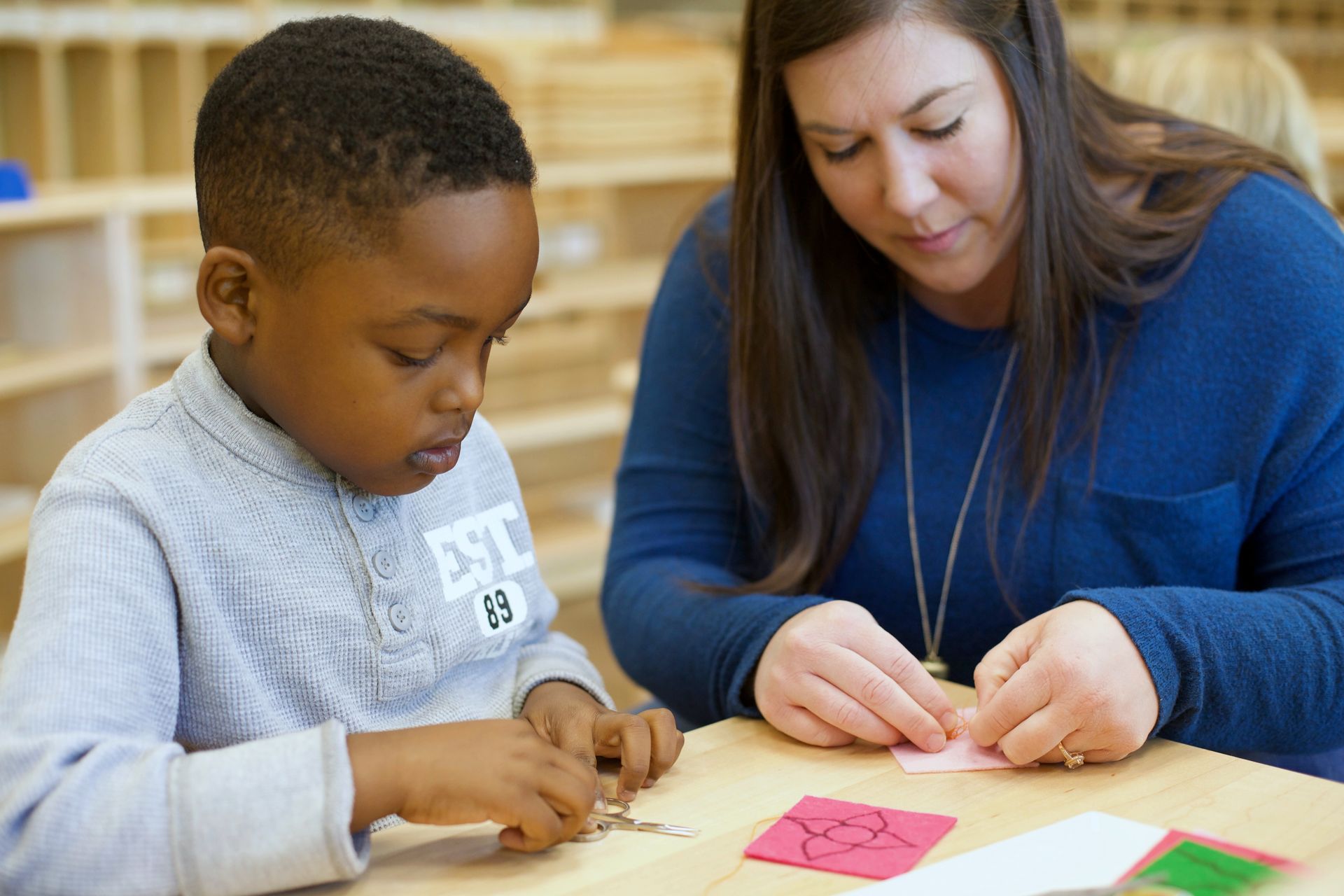
What, exactly, is the role of the Montessori teacher? How is it so different from that of any other teacher? Sometimes it’s easiest to begin by explaining what a Montessori teacher isn’t. A Montessori teacher is less like the traditional idea of an instructor, and more like a gentle guide. They don’t consider it their job to give a child information. They rather lead children in the general direction and give them the tools they need to find the information themselves. Maria Montessori once said, “The greatest sign of success for a teacher...is to be able to say, ‘The children are now working as if I did not exist.’” Montessori Teachers Cultivate Independence In a Montessori classroom, rather than seeing a teacher at the front of the classroom giving the same lesson to every child, the teacher will be working quietly with individual children or small groups. While that is happening the rest of the children are free to spend their time doing the work that calls to them. A Montessori teacher works hard to create structures that allow children to be independent and to trust themselves as learners. One large part of what a Montessori teacher does is to intentionally prepare a classroom environment that is developmentally appropriate, is inviting to children, and supports them on their journey to work independently. This environment is constantly changing in tiny ways as the teacher notices new and evolving needs of the students. Montessori Teachers are Trained to Think Like Scientists Parents should know that Montessori teachers are highly trained. Most have recognized Montessori credentials in addition to their college degrees. Montessori certification programs are intensive and demanding; one might compare them as being the equivalent of another college degree. These training programs don’t just teach Montessori educators how to use the specialized materials; there is extensive coursework about Montessori philosophy, child development, and integrating the arts. When it comes to assessments, Montessori teachers don’t rely on standardized tests; they rely on the power of observation. They have notebooks brimming with evidence of what their students have mastered, need more support with, and are curious about. They are constantly recording what they notice children working on, how that work is being executed, and ideas they might have in anticipation of a child’s next steps. Montessori teachers literally sit beside a child and determine exactly what they know about a wide range of content areas. Montessori Teachers Think Long-Term Because of Montessori’s three-year cycles, teachers have the unique ability to consider their big picture when working with students. There is a natural tendency to allow the children to genuinely learn at their own pace. Getting to know a child and their family well over the course of a few years really supports this approach. Montessori Teachers are Often Called ‘Guides’ ...and for good reason. While children in Montessori classrooms have an abundance of choice in their educational pursuits, Montessori is based on the idea of ‘freedom within limits’. It’s the Montessori teacher’s job to carefully craft those limits. Children rely on having a certain amount of structure in place. This gives them comfort and a safe place in which they can take risks and try new things. Montessori teachers set some boundaries and then carefully help students navigate within them. What if your second grader loves to read but tends to avoid math? Their Montessori teacher will find ways to ensure the math still gets done. Sometimes this involves a gentle discussion with a child about time management skills, priorities, or setting goals. Sometimes the teacher will find a way to integrate the child’s interests into the less desirable work. Sometimes all it takes is a minor change in the environment. Montessori teachers gives children freedom, but they assist children in finding their way to success in this environment. Montessori teachers value independence, self-reliance, and intrinsic motivation. They also value cooperation, kindness, and strength in community. Still curious? Call us to set up an appointment today to observe in a classroom. See what Montessori is really all about.
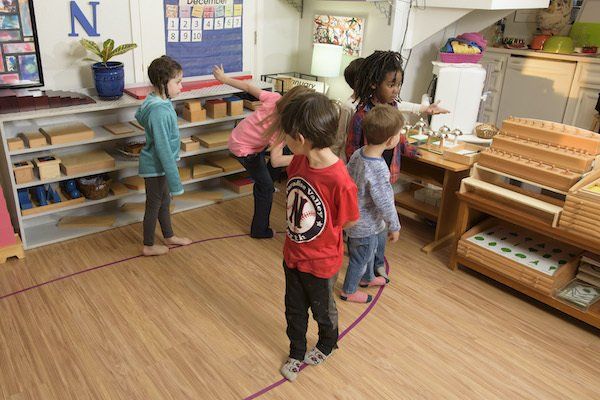
Maria Montessori based her entire educational philosophy on the idea that children developed through a series of four planes. Each of these planes is easy to recognize and has clear, defining characteristics. If we study and understand these stages, we can approach our interactions with children with a new perspective.
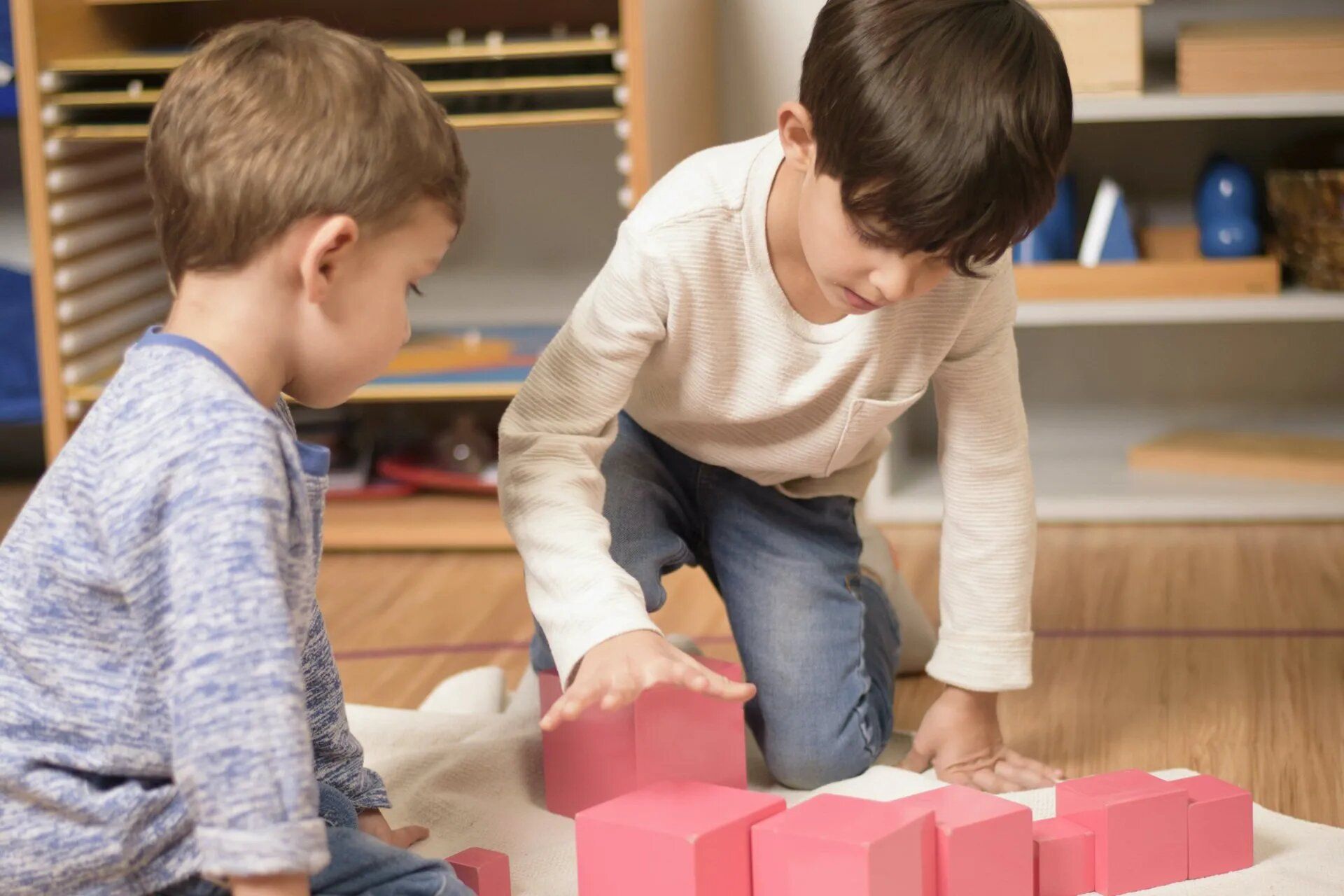
One hallmark of a Montessori education is the use of multi-age classrooms. Infants and toddlers may be together or separate, with a toddler classroom serving children 18 months to three years. Primary classrooms are for children ages 3-6, with preschool and kindergarten-aged children together. The elementary years serve children ages 6-12; some schools separate into lower (6-9) and upper (9-12) elementary, while many split elementary into two groups. Even Montessori middle- and high-school students learn in multi-age classrooms. While Montessori is not the only type of education that utilizes this approach, it’s not what most people are used to. What are the benefits of structuring a classroom this way? Read on to learn more... Learning at an Individual Pace Children in multi-age classrooms tend to have a little more flexibility when it comes to mastering skills within a specific timeframe. We know that learning is not linear, and that learners have periods of significant growth, plateaus, and even the occasional regression. In multi-age classrooms, children are typically able to work at their own pace without the added pressure of keeping up with the whole group, or even being held back by the whole group. When children in a classroom range in ages, everyone has someone they can work with, regardless of their skill level. Children don’t feel left behind if they struggle with a concept, and they also don’t feel bored by repetition of something they have already mastered. Teachers who teach in multi-age classrooms typically have deep knowledge for a range of developmental abilities, leaving them well-equipped to differentiate instruction for each individual child. Building Stronger Relationships Traditionally children move from one class to the next each year. This means not only a new set of academic expectations, different routines, and different classroom structures, but a different teacher. In multi-age classrooms teachers have a longer period of time to get to know a student and their family, and vice versa. When teachers really get to know a student, they are able to tailor instruction in regards to both content and delivery. They know how to hook a specific child onto a topic or into a lesson. They know what kind of environment a child needs to feel successful. Parents have an opportunity to get to know teachers better this way, too. If your child has the same teacher for two or three years, the lines of communication are strengthened. Parents get to know the teacher’s style and expectations. The home to school connection becomes more seamless, and the biggest beneficiary is the child. Mentors and Leaders When a child spends multiple years in the same class they are afforded two very special opportunities. Children who are new to the class are fortunate enough to be surrounded by helpful peer mentors. Children often learn best from one another, and they seek to do so naturally. First and second year students watch as the older children enjoy advanced, challenging work, and this inspires them. They look to the older children for guidance, and the older children are happy to provide it. After a year or two in the same room, students have a chance to practice leadership skills. In Montessori classrooms, the older children are often seen giving lessons, helping to clean up spills, or reaching out a comforting hand to their younger friends. The best part is kids make the transition from observer to leader in their own time. It doesn’t happen for all children at the same time, but when it does it’s pretty magical to observe. Mirroring Real-Life There is no other area in life in which people are split into groups with others who are exactly their chronological age. Whether in the family, the workforce or elsewhere, people ultimately need to coexist with people older and younger than themselves. Doing so makes for a more enriching environment, replete with a variety of ideas and skills. Why not start the experience with young children in school? Moving On While staying in the same class for multiple school years has many benefits, a child will eventually transition into a new class. While this can feel bittersweet (for everyone involved!) children are typically ready when it is time. The Montessori approach is always considering what is most supportive of children depending on their development. When formulating how to divide children into groupings, Maria Montessori relied on her ideas about the Planes of Development. There are very distinctive growth milestones children tend to reach at about age 3, another set around age 6, and yet another at age 12. The groupings in our schools are intentional, and they give kids a chance to feel comfortable in their community, while also preparing them to soar forward when the time is right.
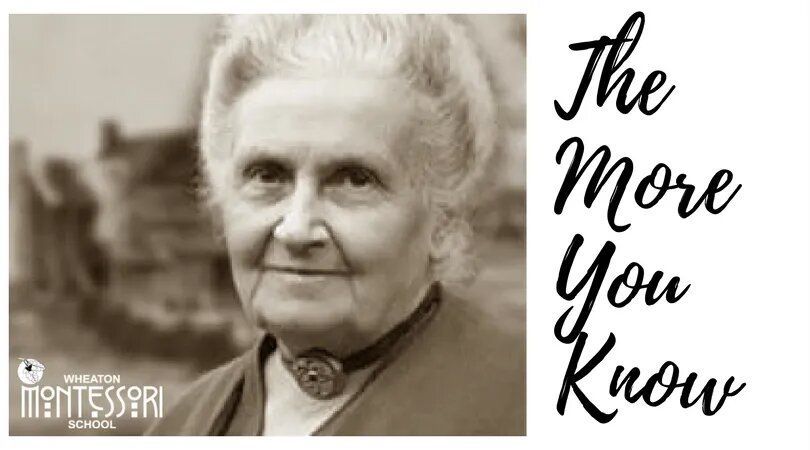
Dr. Maria Montessori: You probably know her as the woman who created a unique method of educating children. You may know she was from Italy and was one of the nation’s first female physicians. What you may not know is she was a woman who consistently faced adversity throughout her life and still managed to cultivate incredible progress. During Dr. Montessori’s childhood, literacy rates were very low across Italy. She was fortunate, however, and received a more advanced primary education than most. Still, women of her time were expected to focus on domestic work. Those that went on to professional careers were often in the field of teaching, a job she ironically said she would never pursue. She originally had an interest in becoming an engineer, but eventually decided to pursue medicine. Montessori’s father made it clear that he was not in support of her decision, which was a sentiment echoed by other male figures in her life. Upon meeting with a professor of medicine at the University of Rome to discuss her plan, she was denied the opportunity to apply to the program. She enrolled at the university anyway to study math, science, and physics, and after several years worked hard to take and pass the entrance exams necessary to enter the medical program. Women were not allowed, and her enrollment was denied. Not one to take no for an answer, Montessori persisted. Her efforts even garnered the support of Pope Leo XIII, and she was eventually granted admission to the medical program. Throughout her time studying medicine at the university, Montessori faced discriminatory standards that would frustrate any one of us. As a woman, she was not even allowed to walk to school by herself, so her disapproving father walked with her each day. She could not enter lecture halls alongside her male peers and was made to wait outside until everyone else was seated. The idea of her standing alongside men during dissections of naked human cadavers was considered highly inappropriate, so she was forced to do her own dissection work alone in the evenings. Despite everything, Montessori went on to graduate in 1896. Her accomplishments were recognized and she was asked to represent Italy at an international women’s conference. At the conference, scores of protesting women gathered outside, frustrated with the privileged bourgeois women of the conference whose ideas of feminist reform were not enough in their eyes. The women outside believed in revolution, and felt that the slow pace of reform would get in their way. Montessori was chosen to address the crowds. She spoke passionately about the movement of feminism and how it was not bound to a specific social class. Her words were uniting, and she was well received not just by the women outside, but by the press and the other international delegates as well. Montessori’s feminist ideals were radical for her time. She believed in equal pay for women. She believed that women who wanted to study in the areas of math and science should be allowed to, but she thought that did not excuse them from being proficient in the areas of domestic life as well. To that end, she believed that boys should be taught practical life skills in the home just as well as girls, and these beliefs carried over into her eventual development of the Montessori primary program. Several times during her early career, Montessori was charged with overseeing children who were not deemed competent by the standards of society. Each time, she used her scientific background and approaches to develop new ways of working with the children and guiding them to exceed the expectations of others. This first happened in a psychiatric ward where she noted young children housed alongside mentally ill adults. They were forced to exist in plain rooms with nothing to entertain themselves. Gathering ideas from educators who came before her, she began to develop methods and materials to help these children learn. They did, and before long she became the director of a new school in Rome that was to educate children that typical schools were unable to, as well as to train other teachers to do so. Unsurprisingly, this venture was a huge success. On standardized tests, the children at the school were even able to perform as well as or better than their peers in typical schools. The next phase of her life and career was a natural progression. San Lorenzo, Rome, was a very poor area in which parents who had to work during the day were forced to leave their young children at home. The children ran amok and caused general mischief and destruction. Thus was the creation of the famous Casa dei Bambini, the first Montessori school; a school within the apartment complex of the children it served. It opened in 1907 and welcomed children ages 2-6. It was at Casa dei Bambini that Montessori developed many of her founding principles and materials for what would become the primary program. The school was such a huge success that for the remainder of its existence welcomed people from around the world who would come to see it for themselves. Countless people would visit to observe and leave astounded and inspired. Decades later, after the Montessori method had begun to spread around the world and find enthusiastic supporters in many countries, a political shift began to take place globally. In Montessori’s own Italy, Mussolini rose to power and brought the country into a fascist regime. Somehow, the two came to an understanding: Mussolini wanted Montessori to further develop her work in Italy, and she, denying allegiance to politics of any kind, accepted the support. She felt that her work would bring about peace in the long run, while he was more focused on the fact that Montessori students presented as well-behaved and compliant. When it eventually became evident that he intended to use her schools as a vehicle to train a nation of young fascists, Montessori schools across Italy quickly closed and she fled the country. For the next twenty years she lived in Spain and cultivated a vibrant and strong extension of the Montessori movement. Sadly, in 1936, the country found itself in a civil war and Montessori and her family quickly escaped to England. At one point, after having lived in so many different places, she was asked about her nationality. Her response? “My country is a star which turns around the sun and is called Earth.” Dr. Montessori was a woman who never let others stand in the way of her own progress and success. She lived through two world wars, was a staunch supporter of the early feminist movement, proved her abilities academically, and went on to dedicate her life to enriching the lives of others. She did not allow others to hold her down, and used her own success as an example of what we are all capable of. Montessori stood, and continues to stand, as a beacon of hope for humanity. She was nominated for the Nobel Peace prize in 1949, 1950, and 1951. She died in 1952 in the Netherlands, yet her legacy carries on.
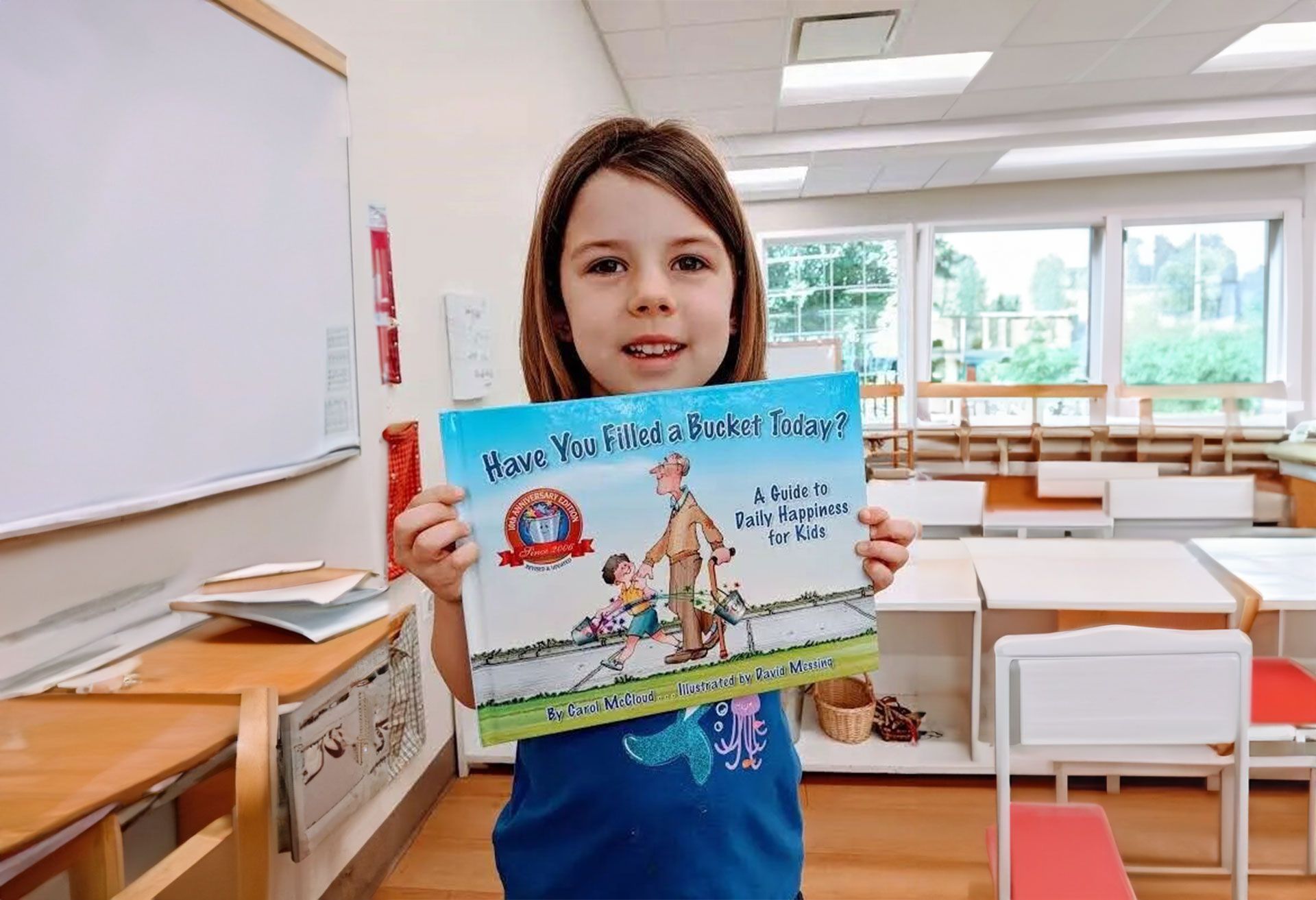
Hello dear families. We are sending out our love and support during this challenging time. We know you are stuck at home, but we hope you have found some beautiful moments or ways to make it work. In lieu of our regular book list this month, we created one that may be helpful in this unique situation. The list consists of two parts: books that may be helpful in content if you are so inclined to order them online and prefer physical books, and sources for ebooks for children. Books About Health and Viruses Germs Are Not for Sharing by Elizabeth Verdick, illustrated by Marieka Heinlen Perfect for toddlers and preschoolers, Germs Are Not for Sharing has simple text and clear illustrations that teach and remind little ones what they should do when they are sick. For example, “Cough, cough, cough! What do you need to do? Turn your head away. Cough into your sleeve.” A Germ’s Journey by Thom Rooke M.D., illustrated by Anthony Phillip Trimmer Ideal for lower elementary-aged children, Trimmer’s mischievous-looking green germ character, combined with Rooke’s clear explanations give kids a better sense of how we spread germs to one another and what they do in our bodies. Perfect for giving information to children who are curious to learn more about why we are self-isolating and how our immune systems work to protect our bodies, this book couldn’t be more timely. Microbiology: It’s a Small World! By Simon Basher, illustrated by Dan Green For the science lovers: Basher’s book gets into descriptions of various microbes. Striking drawings will appeal to kids, as will more information than they will find in a typical storybook. From the first discoveries of bacteria, to how our bodies defend themselves against germs, and facts about a variety of microbes, there is plenty of fascinating information to satisfy curious kids.
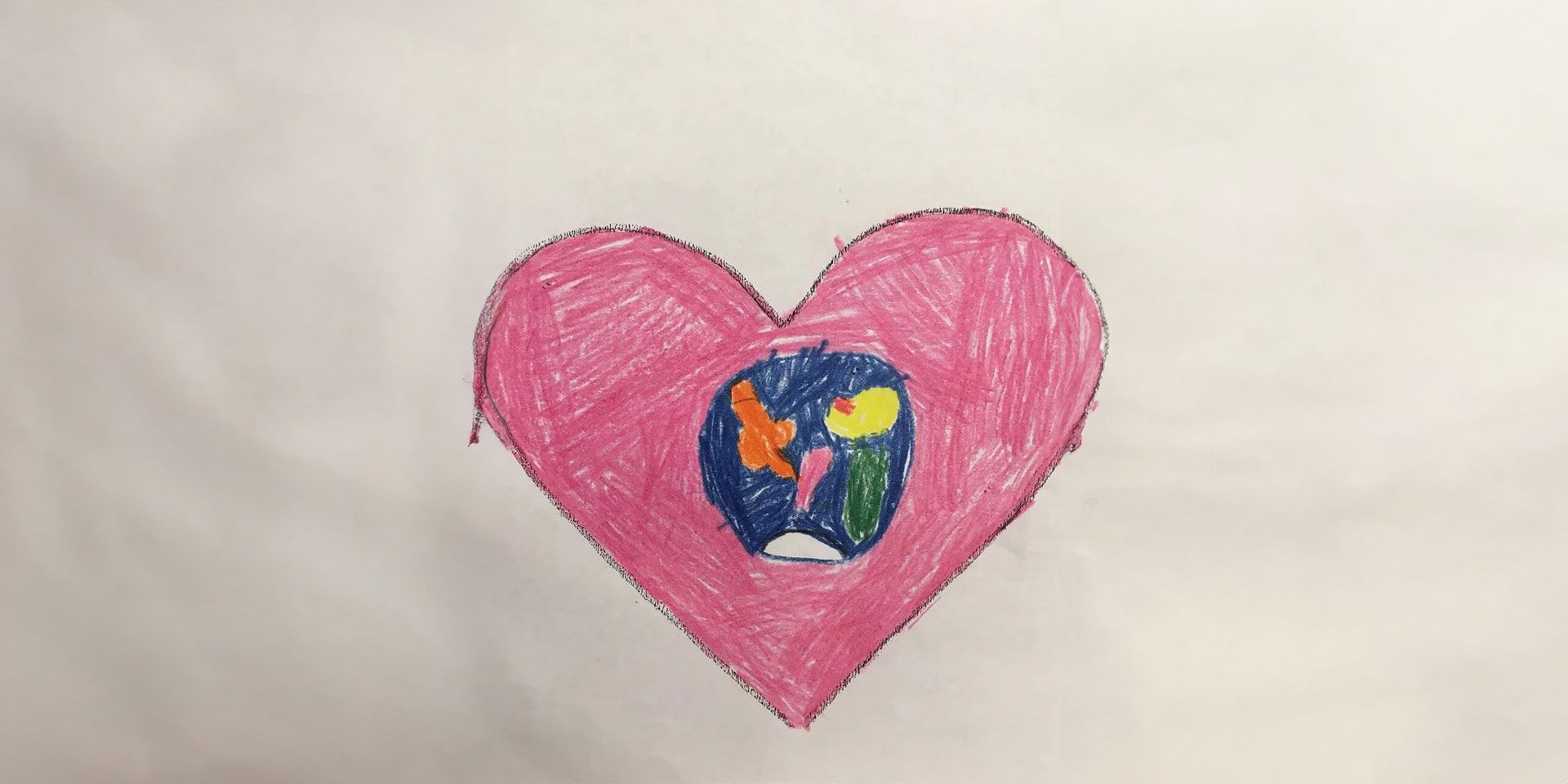
As families we are currently faced with enormous challenges we very likely did not predict or expect. Your children are probably home from school, you are likely working from home, the streets are eerily silent, and grocery stores are weird places. We’re all a little on edge, but as you might imagine, this is a difficult time for our children. You’ve likely seen a host of surprising emotions pour from them in recent weeks. We know you want to be there for your child, and this is a lot to handle at once. In this article we share some ideas to help you support your little ones as we all navigate through these tricky times. Slow down Our lives typically move at a fairly rapid pace. Now that many of us are forced to stay home, the change can feel a little jarring. Embrace slowing down; consider this an opportunity to take your time and really engage and recognize what is important in the moment. For those of you who are not staying home, we know this will be even more of a challenge than usual, but try to find ways to allow your child to do so. Life moves on. We still have deadlines, and careful consideration of daily structure and schedule will help bring some normalcy to an otherwise chaotic period, but if you are at home, it’s okay to pause once in a while. Look out the window together and admire the rain pouring down. Make a delicious lunch together. Reread those library books you can’t return right now.
